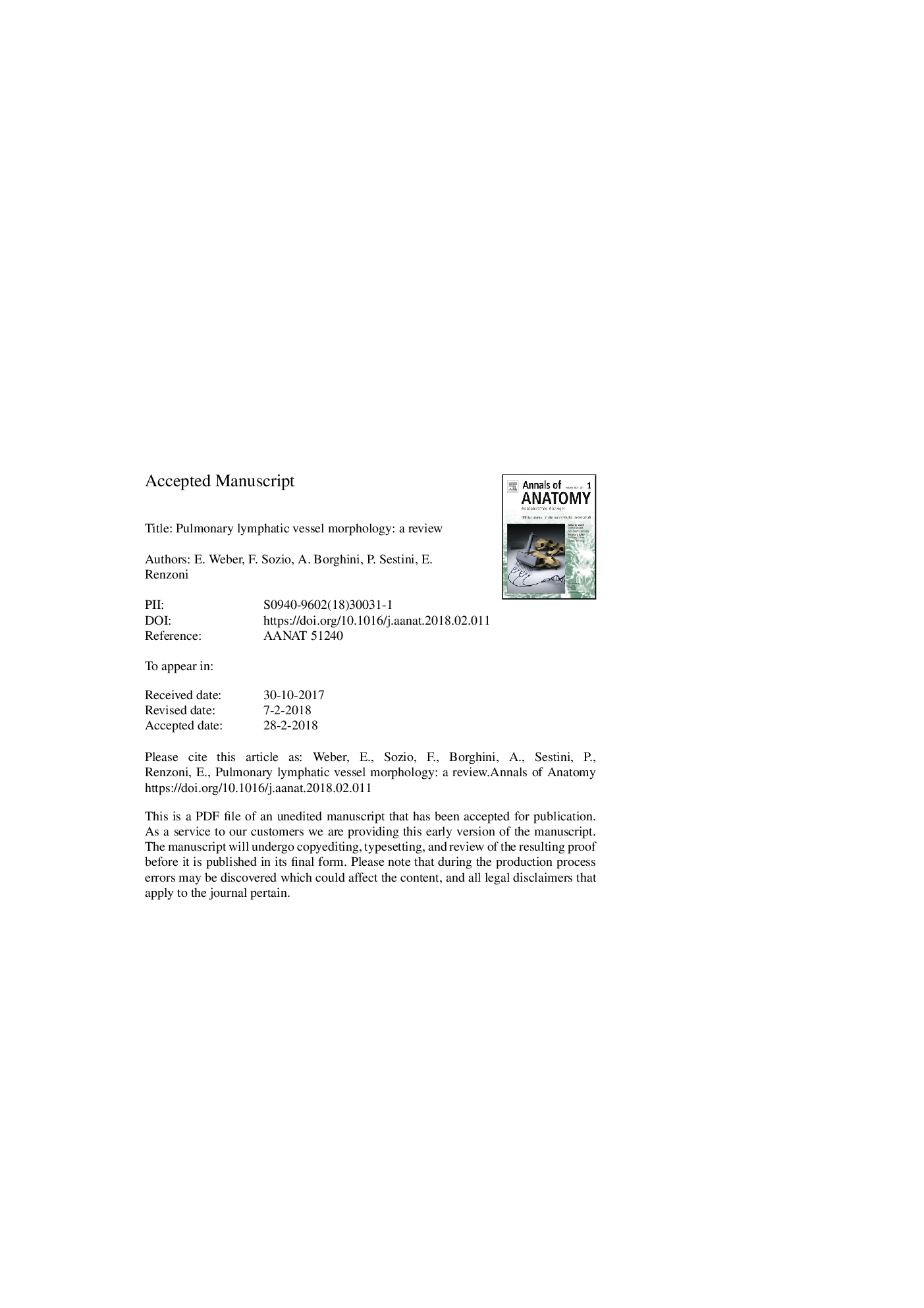| کد مقاله | کد نشریه | سال انتشار | مقاله انگلیسی | نسخه تمام متن |
|---|---|---|---|---|
| 8460285 | 1548977 | 2018 | 30 صفحه PDF | دانلود رایگان |
عنوان انگلیسی مقاله ISI
Pulmonary lymphatic vessel morphology: a review
ترجمه فارسی عنوان
مورفولوژی ریه ریه: بررسی
دانلود مقاله + سفارش ترجمه
دانلود مقاله ISI انگلیسی
رایگان برای ایرانیان
کلمات کلیدی
عروق لنفاوی، ریه مرفولوژی، لوبول ریوی، توزیع آناتومیک،
موضوعات مرتبط
علوم زیستی و بیوفناوری
بیوشیمی، ژنتیک و زیست شناسی مولکولی
بیولوژی سلول
چکیده انگلیسی
Our understanding of lymphatic vessels has been advanced by the recent identification of relatively specific lymphatic endothelium markers, including Prox-1, VEGFR3, podoplanin and LYVE-1. The use of lymphatic markers has led to the observation that, contrary to previous assumptions, human lymphatic vessels extend deep inside the pulmonary lobule, either in association with bronchioles, intralobular arterioles or small pulmonary veins. Pulmonary lymphatic vessels may thus be classified into pleural, interlobular (in interlobular septa) and intralobular. Intralobular lymphatic vessels may be further subdivided in: bronchovascular (associated with a bronchovascular bundle), perivascular (associated with a blood vessel), peribronchiolar (associated with a bronchiole), and interalveolar (in interalveolar septa). Most of the intralobular lymphatic vessels are in close contact with a blood vessel, either alone or within a bronchovascular bundle. A minority is associated with a bronchiole, and small lymphatics are occasionally present even in interalveolar septa, seemingly independent of blood vessels or bronchioles. The lymphatics of the interlobular septa often contain valves, are usually associated with the pulmonary veins, and connect with the pleural lymphatics. The large lymphatics associated with bronchovascular bundles have similar characteristics to pleural and interlobular lymphatics and may be considered conducting vessels. The numerous small perivascular lymphatics and the few peribronchiolar ones that are found inside the lobule are probably the absorbing compartment of the lung responsible for maintaining the alveolar interstitium relatively dry in order to provide a minimal thickness of the air-blood barrier and thus optimize gas diffusion. These lymphatic populations could be differentially involved in the pathogenesis of diseases preferentially involving distinct lung compartments.
ناشر
Database: Elsevier - ScienceDirect (ساینس دایرکت)
Journal: Annals of Anatomy - Anatomischer Anzeiger - Volume 218, July 2018, Pages 110-117
Journal: Annals of Anatomy - Anatomischer Anzeiger - Volume 218, July 2018, Pages 110-117
نویسندگان
E. Weber, F. Sozio, A. Borghini, P. Sestini, E. Renzoni,
